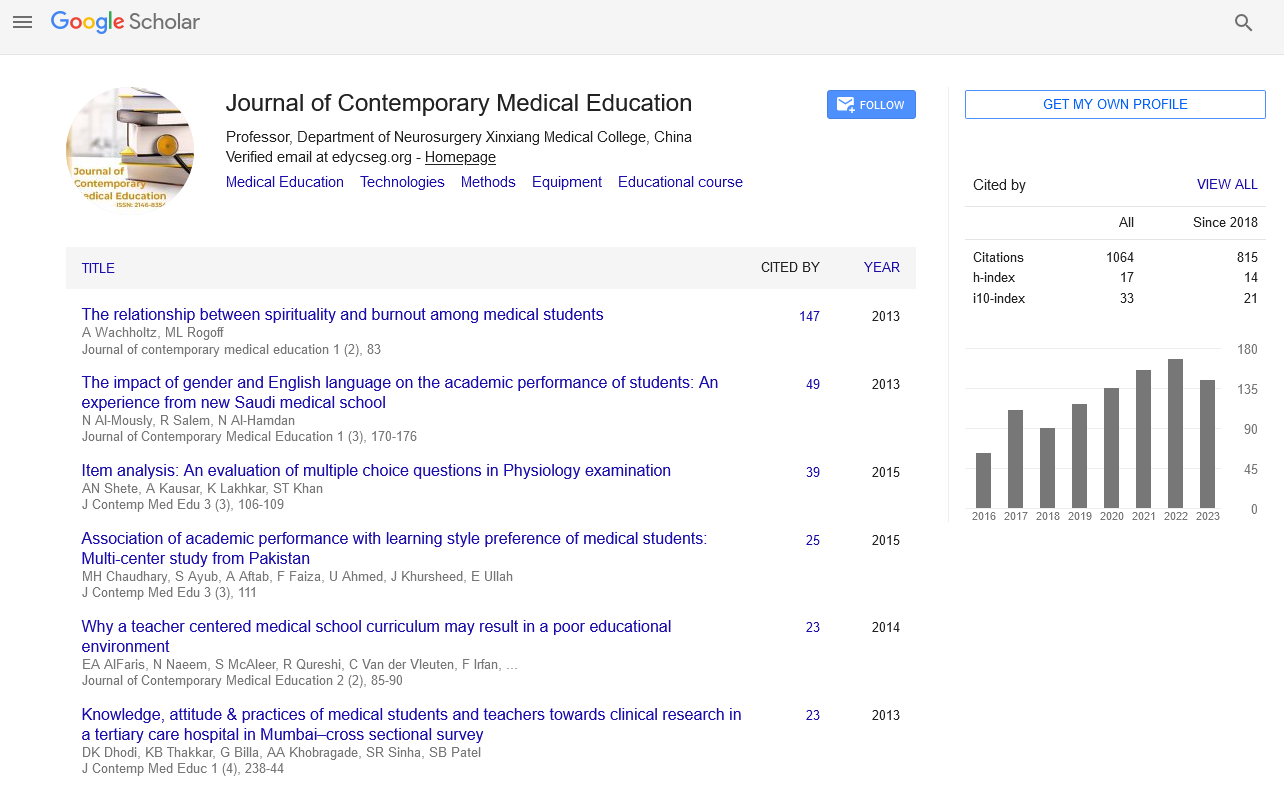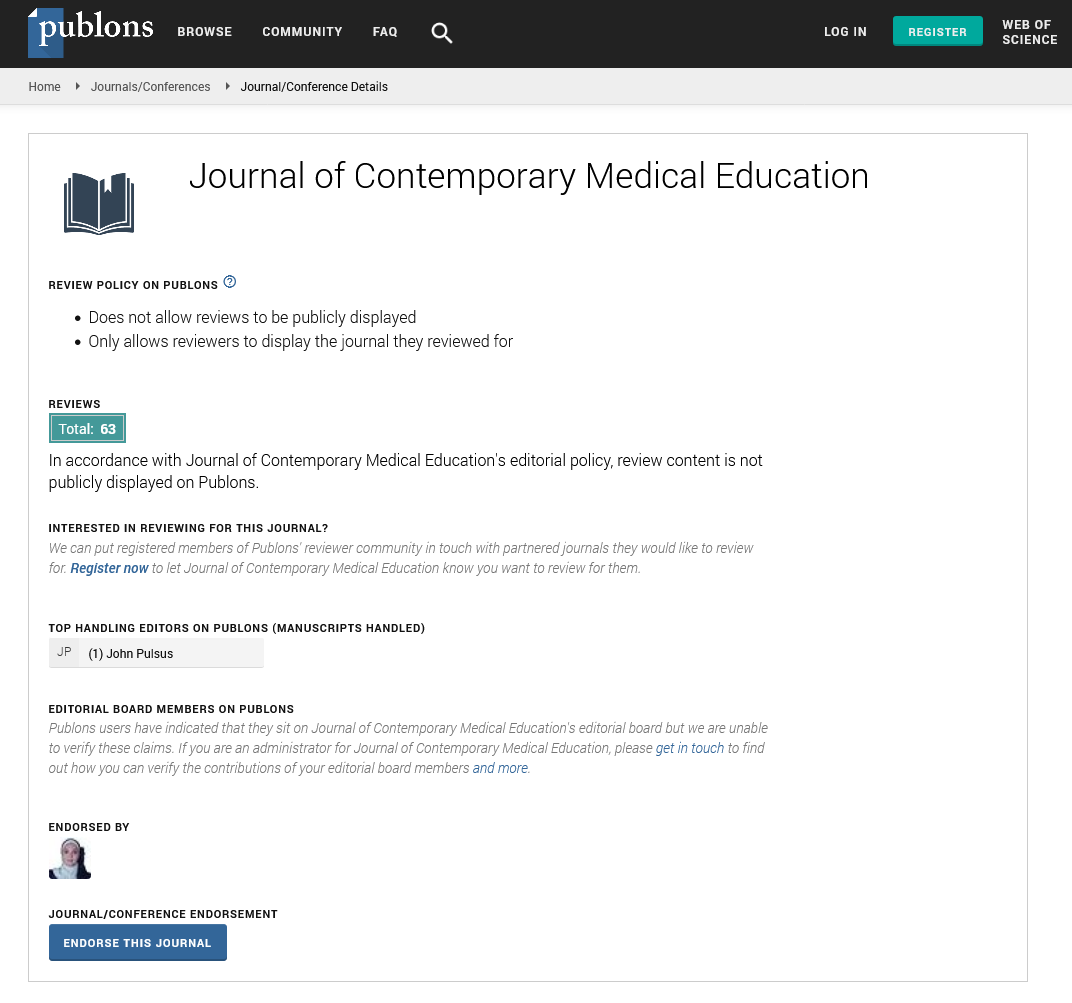Association of academic performance with learning style preference of medical students: Multi-center study from Pakistan
Abstract
Muhammad Hamid Chaudhary, Sadia Ayub,Ansar Aftab,Faiza Faiza, Ushna Ahmed, Javeria Khursheed, Ehsan Ullah
Objectives: The purpose of this study was to assess preferred learning styles and determine their association with the academic performance of undergraduate medical students in various medical colleges in Pakistan. Participants and Methods: A cross-sectional study of 597 medical students from six medical colleges (~100 from each college) was performed. The validated VARK questionnaire version 7.0 was used to categorize the learning styles of students. The questionnaire consists of 16 items which identify four different learning styles: Visual, auditory, reading/writing, and kinesthetic (VARK). Descriptive statistics were used to identify the learning styles of students. Analysis of Variance (ANOVA) was used to compare the academic performance (marks obtained in last professional examination) between students having different learning styles. Results: The response rate was 82.9%. The results showed that mean scores for VARK styles were 4.28 ± 0.09, 4.91 ± 0.08, 4.54 ± 0.07, and 4.75 ± 0.09, respectively. Only 164 (27.6%) students preferred a unimodal learning style, i.e., 38 (6.4%), 56 (9.4%), 20 (3.4%), and 50 (8.4%) preferred the VARK modes, respectively, whereas 72.4% of students preferred multiple learning styles. ANOVA showed there was no significant difference of academic performance among the students having different learning styles. Conclusions: Majority of students prefers multimodal learning styles and learning style preference is not associated with academic performance in medical students across Pakistan. The results of this study provide useful information for improving the quality of the medical teaching and learning experiences of medical students. However, further research is needed to explore the association among learning style preferences, learning strategies, and academic performance.
PDF






